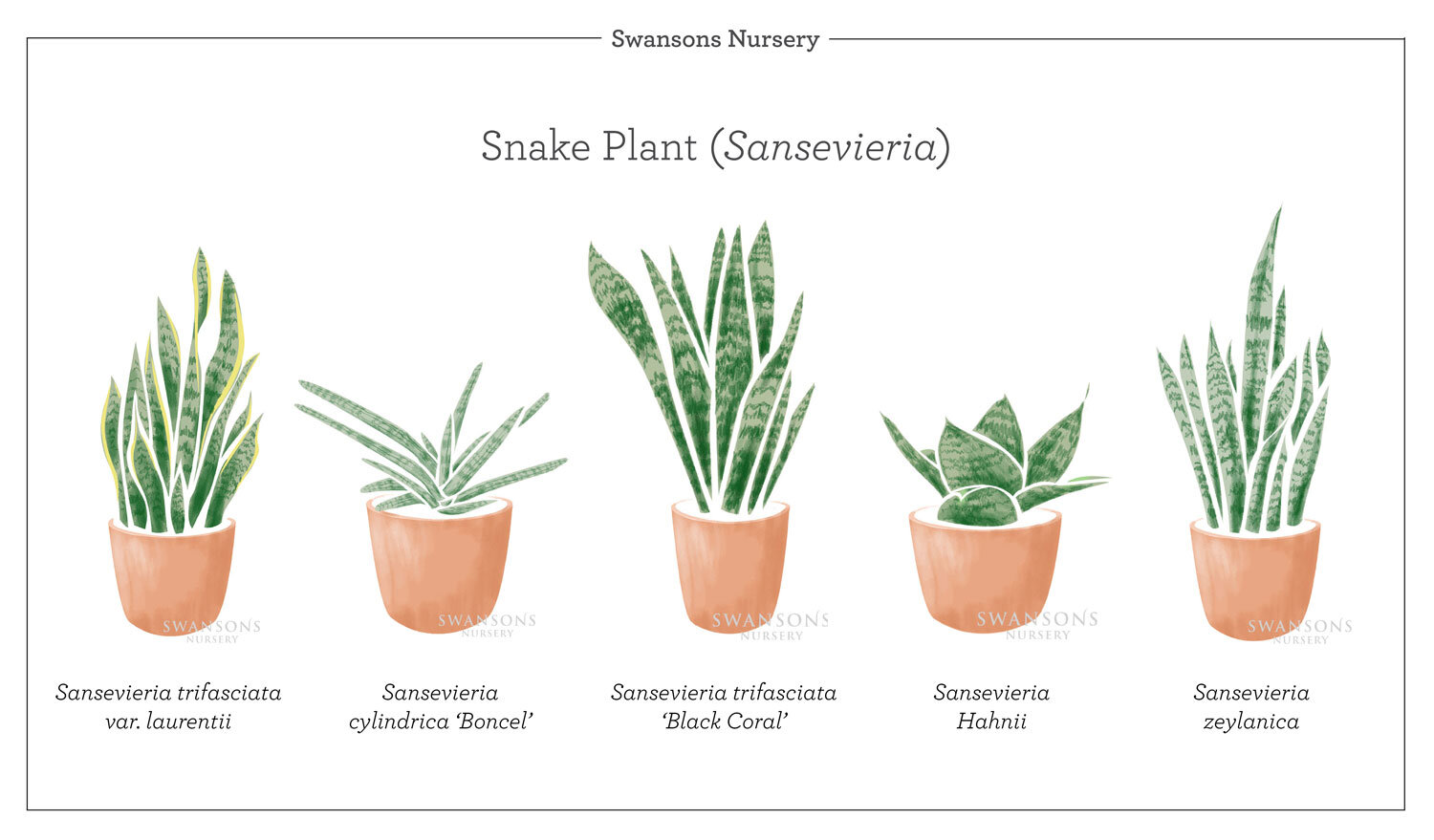Snake Plant
The snake plant is a carefree, resilient houseplant that makes a bold, architectural statement in your home with tall, swordlike leaves and unique variegation. Tolerant of most growing conditions, it is an ideal plant for beginners or those who want an easy-to-grow houseplant. Read on to learn more about the snake plant and how to help it thrive.
Sansevieria trifasciata var. laurentii
How to Care for a Snake Plant
This houseplant is one of the easiest to grow. It is almost indestructible but we know that you have your sights set on a higher bar, right? You want your snake plant to thrive! It will thank you for a little care and attention but this plant definitely isn’t needy (overwaterers, beware!) When in doubt, give it some space to do its thing.
Water
Native to rocky, arid areas of West Africa, snake plants have evolved to survive in times of drought and definitely doesn’t appreciate being soggy. Let the soil dry out mostly in between waterings. In winter, this could mean watering only every few weeks or less, depending on the size of the plant and pot. When you do water, you want to soak the soil completely and let any excess water run out the bottom. One way to tell if you have given the plant enough water is to see if the pot is significantly heavier after you have watered it.
Light
The snake plant is adaptable to different light conditions but prefers bright indirect light. It can live in a darker spot but it may not grow well or look its best. It can also adapt to a fair amount of direct sunlight but may scorch in the hot summer sun in a southern window.
Fertilizer
Fertilize with a cactus fertilizer in the spring and summer when the plant is actively growing.
Humidity & Temperature
Many houseplants demand high air humidity and suffer in the dry air of our homes. Not the snake plant! It is content with most conditions you might find inside the house, generally preferring to grow in temperatures between 65 and 90 Fahrenheit and to stay out of chilly drafts.
Sansevieria cylindrica ‘Boncel’
Repotting a Snake Plant
Snake plants are slow growers and can live in the same pot for quite some time. However, if you notice the roots pushing out against a plastic pot or coming out of the bottom, it may be time to repot your plant. Repot into a container that is no more than about 1-2” taller and/or wider than the original container. We recommend planting in a plastic container with drainage holes that you can then put into a decorative ceramic cachepot.
To repot, remove the plant, gently massage the roots to loosen them, and replant with fresh houseplant soil (a mix of indoor potting soil and cactus soil works well). Don’t forget to give it a good soak when you’re done!
Propagating
There are a few ways to propagate your snake plant. The easiest way is division. Small new shoots with roots may be separated from the parent plant and repotted. Be careful not to damage the roots in the process.
Another option, although a bit slower to yield results, is to take a cutting. Cut off one of the stems and divide into 3-inch pieces. Dip the cut end in rooting powder and plant in dry cactus soil or sand. Eventually, the cutting should produce roots and then new stems.
Fun fact: This is one of the few plants whose babies from cuttings may have different coloring and variegation than the parent, which is kind of exciting if you think about it!
Is it a Sansevieria or a Dracaena?
Botanists had long disagreed about whether the plant should be a part of the Sansevieria or the Dracaena genus and you will find the snake plant labeled both as Dracaena trifasciata and Sansevieria trifasciata.
Snake Plant discovers his true origins
illustration: Home by Faith
More about the Snake Plant
Snake plants have stiff leaves that grow from six inches to eight feet, depending on the variety you choose. Be gentle with the pointed tips of the plant. If a tip is broken the leaf will stop growing.
It is one of the top ten plants most effective in removing formaldehyde, benzene, and carbon monoxide from the air.
The snake plant was first cultivated in China. It was considered a treasured houseplant because it was believed the eight gods would bestow the virtues of long life, prosperity, intelligence, beauty, art, poetry, health, and strength upon those who cultivated it.
Snake plants are considered toxic if ingested by pets or humans.
Snake Plant Varieties
Swansons carries lots of different snake plant varieties, depending on availability. You will often find the following unique varieties (not all varieties are continually available):
Sansevieria trifasciata var. laurentii (the classic upright, yellow-edged variety)
Sansevieria cylindrica 'Boncel' ( another compact variety with fat, pointed leaves that spread out like a fan.)
Sansevieria trifasciata 'Black Coral' (one of the darkest upright varieties)
Sansevieria Hahnii (birds nest) (compact with shorter, funnel-shaped leaves in a rosette form)
Sansevieria zeylanica (an upright variety with deep green variegation)
Read our other indoor plant profiles: All About Pothos and All About Dracaena.






